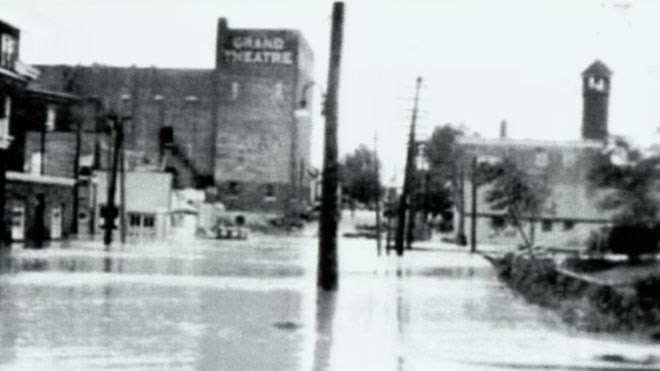As many residents know, the old City of Sudbury developed around Junction Creek, the 52-kilometre waterway that crosses much of Greater Sudbury.
While a convenient spot at the turn of the century for early settlers — offering access to the railway and water for farming — the area was prone to frequent flooding.
"This was a common experience in the 1920s and 1930s," said Tony Cecutti, the city's GM of infrastructure, at a recent city council meeting. "The creek still is at risk of flooding during some (rain) events."
To address the problem, the creek has been straightened over the last century, and a series of culverts and dams have been built to regulate water flow. But several of those structures are in need of rehabilitation, especially as climate change has led to more tumultuous weather.
Greater Sudbury is hoping to tap into a multi-billion federal initiative – the Disaster Mitigation and Adaptation Fund — that will pay for 40 per cent of related work, as long as the total is at least $20 million.
Councillors authorized staff to apply for funding for $22.1 million in projects over the next decade. If approved, the feds would fund $8.84 million, the city $8.1 million and Conservation Sudbury $5.16 million.
"This has been a long time in coming ... certainly for the residents of the Flour Mill," said Ward 12 Coun. Joscelyne Landry-Altmann, whose ward has been particularly hard hit by flooding. "It's fortunate we have an opportunity (for federal funding)."
The funding application is for four flood mitigation projects in the Junction Creek Watershed.
The projects include the reconstruction and dredging of Junction Creek, from the inlet of the downtown box culvert at Lloyd Street north to the CN tracks that cross Notre Dame, and a stormwater management facility on the Nickeldale branch of Junction Creek.
“Both of these projects will help to improve flood resiliency in the Flour Mill and New Sudbury area and enhance the existing environmental condition,” a staff report on the plan says.
Assuming the funding application is successful, the report outlines timelines and costs for each project. Dredging Junction Creek upstream of the downtown box culvert to the CN crossing is estimated to cost $10 million and would involve dredging of about two kilometres of the waterway. That work is slated for 2023 and will take about a year to complete.
That would address flooding issues on streets like Notre Dame Avenue and Perreault Street, ensuring city storm sewers have proper outlets for water at critical times, reducing the likelihood of flooding in design events. The report says removing the layer of silt and other materials that have built up over the decades would help restore the natural habitat for species of the creek, as well as water flow.
The second project – expected to cost $3 million – is rehabilitating the Downtown box culvert, a major element of preventing floods in the area. That work is expected to begin next year, and take about four years to complete.
“It is critically important to continue with the major rehabilitation within the time span identified in the strategy to ensure the resiliency of the box culvert,” the report said.
Work will begin this year on the third project, rehabilitating Maley Dam, a two-year project that will cost $5.6 million. Work to repair the Nickeldale Stormwater Management Facility, the final project, is worth $3.5 million and will begin in 2023 and take a year to complete.
